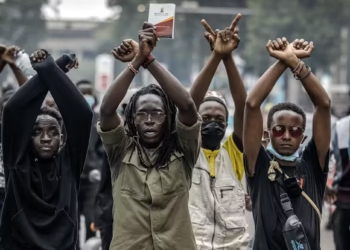Introduction
The security landscape of the Sahel region continues to evolve rapidly in 2025. Armed extremist groups, especially Jamaʼat Nusrat al-Islam wal-Muslimin (JNIM) and Islamic State Sahel Province (IS Sahel), are adopting increasingly sophisticated tactics. These developments reflect broader trends in global insurgency strategies, driven by accessible technology, weakened state institutions, and shifting geopolitical dynamics. As these groups adapt, the consequences for civilian safety, national stability, and international intervention strategies become more severe.
Tactical Innovations by Extremist Groups
1. Weaponization of Commercial Drones
One of the most notable developments is the integration of drones into combat operations. Commercially available drones, which were once used for recreational or civilian purposes, have been transformed into tools of war.
- Kamikaze and IED Drones: Extremist fighters have modified drones to carry explosives, turning them into guided missiles or airborne improvised explosive devices (IEDs). These drones have been deployed to attack military installations, civilian centers, and private military bases, including those operated by groups like Wagner.
- Surveillance and Propaganda: In addition to combat use, drones are being employed for reconnaissance missions and for capturing footage used in propaganda videos. These videos help militants spread fear and bolster recruitment efforts.
- Ease of Acquisition: The prevalence of drones in commercial markets, especially across West Africa, makes them accessible and easy to smuggle. Porous borders in the region facilitate the movement of such equipment, often without detection (ACLED, 2024; The Conversation, 2025).
2. Expansion of Remote and Urban Violence
Militant attacks are no longer confined to rural or remote zones. Increasingly, extremist groups are shifting operations to urban areas, intensifying their reach and impact.
- Long-Range Attacks: IEDs, rockets, and mortars are now more frequently used to launch attacks from a distance, minimizing the exposure of the attackers while still causing extensive damage.
- Urban Assaults: Cities like Bamako, Kayes, and Niamey have witnessed coordinated attacks targeting airports, barracks, and police checkpoints. These assaults undermine state authority and demonstrate that no location is beyond the reach of these groups.
- Simultaneous Multi-Location Strikes: JNIM, in particular, has conducted attacks across multiple towns simultaneously, revealing enhanced logistical coordination and communication capabilities
3. Psychological and Information Warfare
Modern extremist campaigns go beyond physical violence. Information operations and community influence are now core elements of insurgent strategy.
- Local Engagement: Militants attempt to position themselves as protectors or providers in communities where government presence is limited. They offer services, settle disputes, or provide security, framing themselves as a more reliable alternative to state forces.
- Media Campaigns: Groups use drone footage, social media, and encrypted platforms to disseminate content that appeals to local grievances or broader ideological narratives. These materials often exaggerate successes or highlight alleged state abuses to build support.
- Use of Threats and Blockades: Communities perceived to be loyal to government forces are sometimes targeted through threats or actual blockades. These tactics heighten the climate of fear and restrict humanitarian access (Africa Center for Strategic Studies, 2025).
4. Strategic Geographic Expansion
Extremist violence is no longer confined to the central Sahel. It is spreading toward West Africa’s coastal states and along critical border corridors.
- Emergence in New Theatres: Attacks have been reported in northern Benin, Togo, and Nigeria. These incursions follow patterns observed in Mali and Burkina Faso, with militants establishing footholds in areas with weak governance.
- Use of Border Zones: Borders remain difficult to control and monitor. Militants exploit these spaces as safe havens and launch pads for cross-border operations. Such environments make it difficult for national forces to plan and execute sustained counter-offensives (Olech & Wójcik, 2025)
Notable Incidents and Tactical Trends (2024–2025)
| Date | Location | Group | Tactic Used | Impact/Notes |
| July 2025 | Kayes, Mali | JNIM | Simultaneous urban attacks | Targeted key mining hub and border towns (ACLED, 2024) |
| May 2025 | Eknewan, Niger | IS Sahel | Kamikaze drone strike | 64 soldiers killed; first suicide drone attack (Olech & Wójcik, 2025) |
| May 2025 | Djibo, Burkina Faso | JNIM | FPV drones dropping IEDs | Attack on military positions; many casualties (The Conversation, 2025) |
| Sept 2024 | Bamako, Mali | JNIM | Drone and IED urban assault | Airport and barracks targeted; 70+ security forces killed (ACLED, 2024) |
| Oct 2024 | Niamey, Niger | JNIM | Urban checkpoint attack | Reinforces militant access to capitals (ACLED, 2024) |
Factors Driving Tactical Evolution
Several factors help explain why militant strategies have become more advanced in the Sahel:
- Withdrawal of International Forces: The reduction of Western military presence, particularly French and EU troops, has left security vacuums. Local armies, already stretched thin, struggle to contain the expanding influence of extremist groups.
- Technological Mimicry: Observing global conflicts like those in Syria and Ukraine, Sahelian militants have borrowed tactical ideas, particularly the use of drones and adapted them for local conditions.
- State Instability: Coups in Mali, Burkina Faso, and Niger have weakened institutional capacity. In many rural or border areas, the state has little or no presence, giving armed groups space to grow.
- Urban Opportunity: With rapid population growth in urban centers, extremist groups now see cities not only as targets for disruption but also as places where symbolic victories can undermine public confidence in the government (ACLED, 2024; CFR, 2024).
Consequences for Security and Civilian Life
- Rising Civilian Harm: Increased reliance on drones and remote attacks has contributed to more civilian deaths and injuries. When states retaliate with force, entire communities can suffer, deepening cycles of mistrust.
- Increased Urban Risk: Cities were once considered relatively secure. Today, they are frequent targets, challenging previous assumptions in regional and international security planning.
- Limits of State Response: Although several governments have purchased military-grade drones, these are expensive and limited in number. Most forces lack the training or equipment to detect or neutralize small commercial drones (The Conversation, 2025).
Conclusion
Extremist groups in the Sahel are not merely persisting, they are innovating. Their ability to incorporate technology, shift operational geographies, and engage in psychological warfare has transformed the nature of conflict in the region. While state responses remain reactive, the evolving tactics demand a more agile, forward-looking approach. It is essential for regional governments and international partners to reassess their counterinsurgency strategies to reflect this new reality. Failure to do so will allow extremist networks to further entrench themselves in the region’s social and political fabric.
The events of 2024 and 2025 as indicated in the table show that drone warfare will intensify, particularly in the light of technological innovation by jihadist groups. It is necessary for governments to work closely to share intelligence and improve radar technology to track drones to identify patterns and engage proactively.
References
- ACLED. (2024, December 12). Conflict Watchlist 2025: Sahel and Coastal West Africa. Armed Conflict Location & Event Data Project. https://acleddata.com/conflict-watchlist-2025/sahel-and-coastal-west-africa/
- Africa Center for Strategic Studies. (2025). Region in Focus: The Sahel. https://africacenter.org/in-focus/the-sahel/
- Council on Foreign Relations (CFR). (2024, October 23). Violent Extremism in the Sahel. https://www.cfr.org/global-conflict-tracker/conflict/violent-extremism-sahel
- Olech, A., & Wójcik, P. (2025). Terrorist challenges in the Sahel and NATO’s southern flank. European Journal of International Security. https://ejournals.eu/pliki_artykulu_czasopisma/pelny_tekst/0197d509-83ab-7112-968b-2b58647182d0/pobierz
The Conversation. (2025, July 7). West Africa terror: why attacks on military bases are rising and four ways to respond. https://theconversation.com/west-africa-terror-why-attacks-on-military-bases-are-rising-and-four-ways-to-respond-258622






























